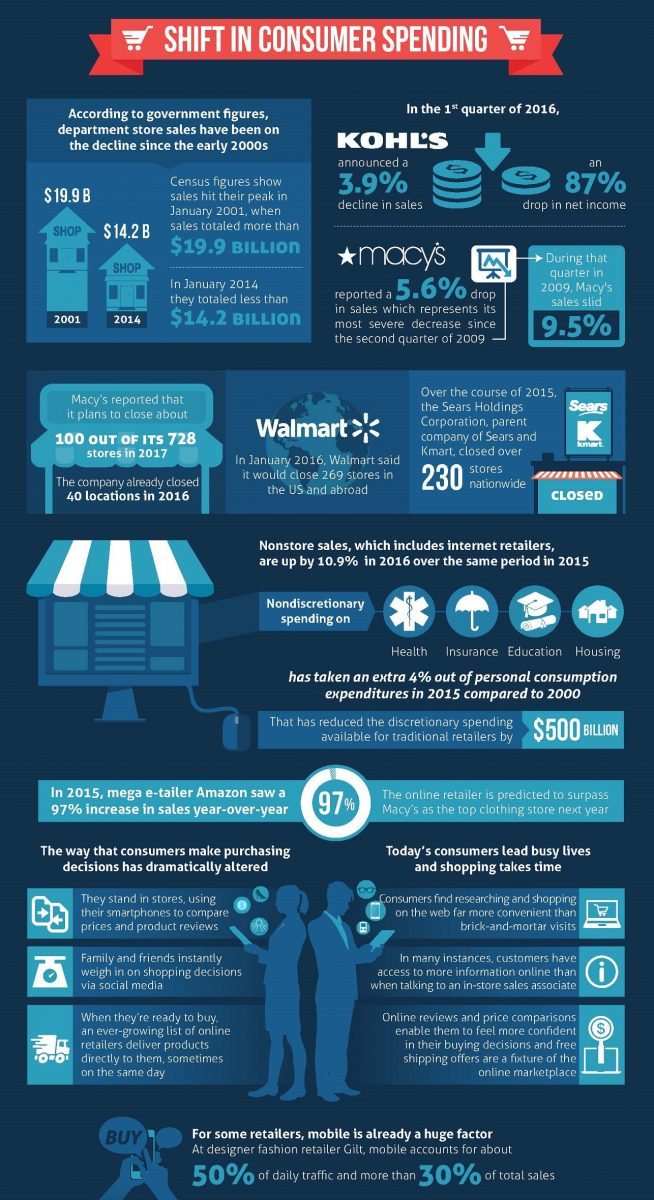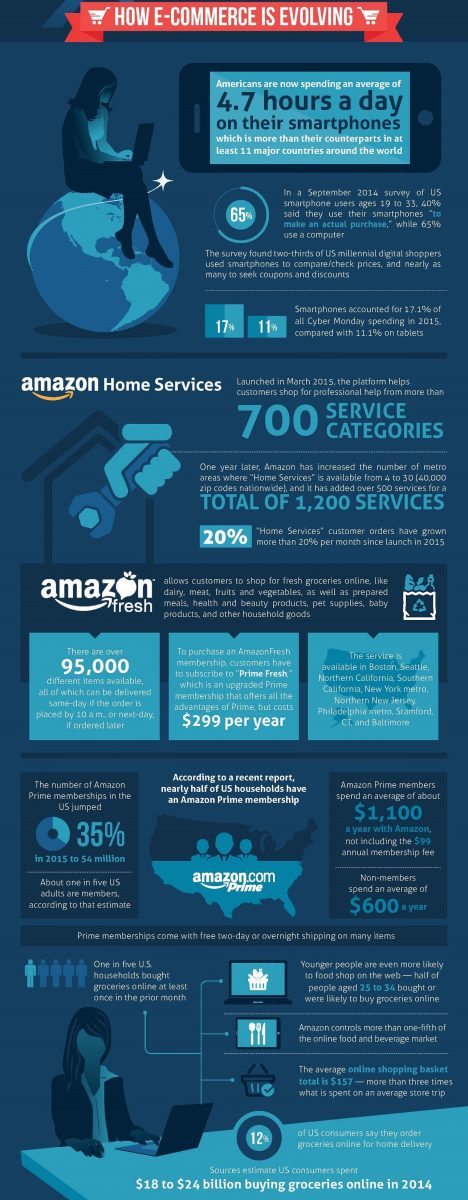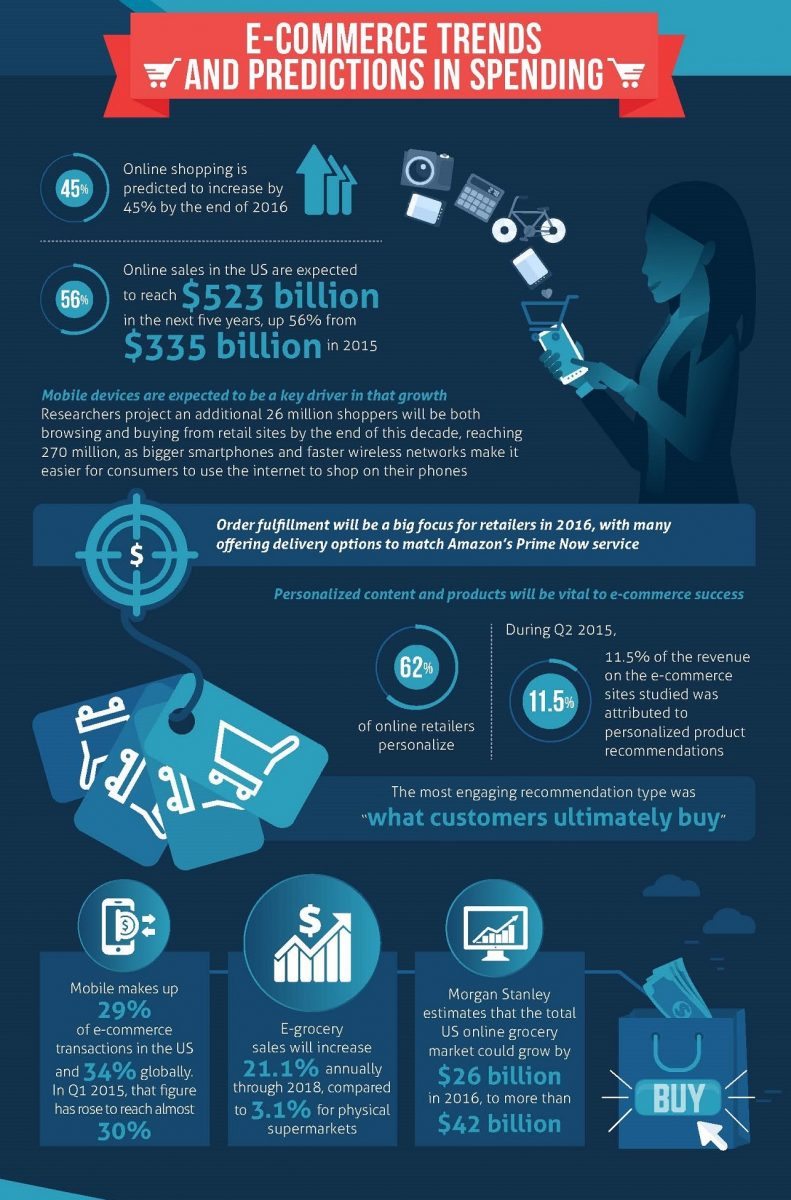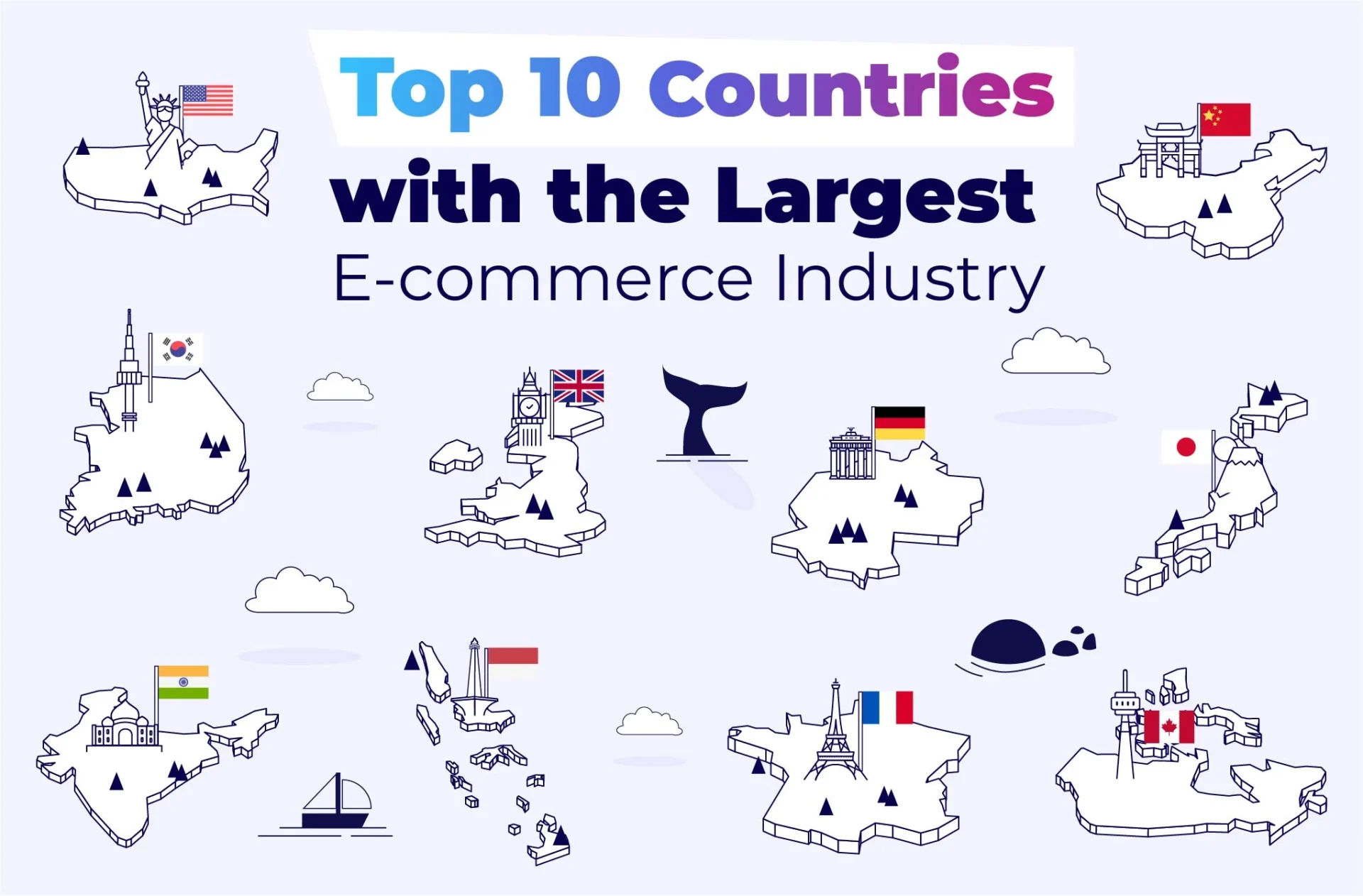According to an eMarketer report, Worldwide Retail E-Commerce Sales: The eMarketer Forecast for 2016, e-commerce sales in the US will reach $423.34 billion by the end of 2016 while China’s online sales will hit $899.09 billion by the end of the same period. E-commerce revenues in other parts of the world including Europe, Africa, and Australasia are on the rise as well. Sadly, the e-commerce industry’s gain translates to revenue losses for main street outlets. Here is how e-sales have cannibalized the traditional retail business model.
The Evolution of a Retail Revolution
The e-commerce industry has ridden on the coattails of web technology to become a major player in the retail chain. A report published by Internet Retailer shows that US-based Peabody was the first business to open an e-store in 1989. Unlike modern e-stores, Peabod’s webstore was only accessible via traditional desktop PCs and laptops, which were the channels that Jeff Bezos targeted when he launched Amazon in 1995.
By 2000, quarterly e-commerce revenues accounted for approximately one percent of all retail sales generated in the US annually. Although the Dot Com bust dampened investor and consumer enthusiasm for e-commerce, the nascent industry rebounded quickly to record total revenues of $70 billion in 2003, $136.2 billion in 2006, and $165.9 billion in 2007. In 2016, eMarketer reckons that global e-commerce sales will reach $1.915 trillion and continue rising to $4 trillion by the end of 2020.
The E-Commerce Sector in America


Figures from a Forrester report, US Cross-Channel Retail Forecast, 2015 To 2020, show that e-commerce revenues will hit $523 billion by 2020, which translates to 56% revenue growth when compared to industry revenues of $335 billion recorded in 2015. E-Commerce trailblazers including Amazon and eBay as well as startups such as jet.com have been the main drivers of this growth.
Unfortunately, this means that consumers are increasingly foregoing brick-and-mortar store purchases in favor of e-purchases. Some of the traditional retailers who are losing ground to the e-commerce industry include Walmart, Macy’s, Kohl’s, Office Depot, as well as Barnes & Noble. A report published by the Harvard Business Review (HBR) states that the e-commerce industry enjoys unique competitive advantages over traditional retailers.
These advantages include the ability to personalize and customize brand shopping experiences, location-based discount offerings, real-time data analytics, and wide range of product/service offerings. As such, legacy retailers must reinvent their sales strategies to survive the e-commerce juggernaut.
Developing E-Commerce Trends

E-Commerce is still a nascent industry even in the US meaning the current market leaders could be displaced by hungrier startups if they take their feet off the innovation pedal. In the last decade, e-commerce revenues generated via mobile devices including smartphones and tablets have been rising to the detriment of PC-based e-sales. This is not surprising considering mobile traffic now accounts for more than 50% of all web traffic, according to a report published by Google in 2015.
According to eMarketer’s US Mobile Commerce Update 201: Behind the Rapid Growth report, mobile commerce will generate revenues of $123.13 billion in 2016. By 2020, smartphones alone will be responsible for e-purchases worth $129.44 billion annually translating to revenue growth of 18.3% since 2014.
In the next few years, virtual reality (VR) and augmented reality (AR) technologies are expected to revolutionize online shopping significantly. This is largely because they can offer more immersive experiences compared to the devices consumers are currently using to access the internet. Sadly, the daily deals craze that was the in-thing a few years ago seems to be in the throes of a slow death.
E-Commerce has changed the way consumers purchase goods and services globally. Currently, China is the clear leader in the e-commerce space followed by the US. In the near future, industry analysts expect AR and VR devices to make e-shopping experiences more immersive than at any other time in the history of the web. To learn more, check out the infographic below created by Villanova University’s Online MBA program.
The evolution of the e-commerce industry is a never-ending subject, as it continues to change and improve every day. Innovation is at the core of any digital business, and this same innovation will be where the next leaders of the market differentiate. Where do you think E-commerce will go in the next year?





